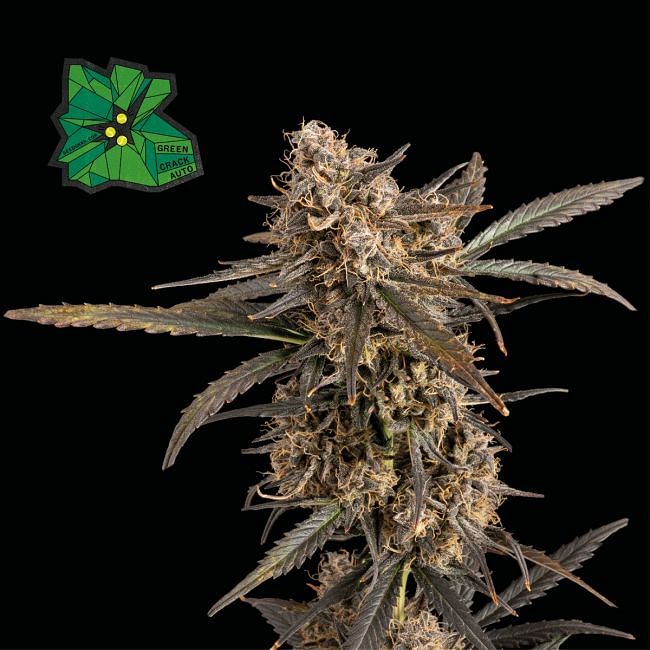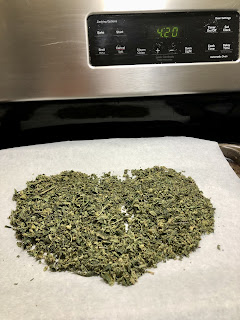Demystifying Cannabis: Understanding the Difference between Indica, Sativa, and Hybrid Strains
Disclaimer: This information is for educational purposes only. Cannabis cultivation, product creation, and consumption are subject to local, state, and federal laws. Always ensure compliance with these laws. Cannabis may have legal, health, and safety implications. Seek legal and medical guidance as needed. The authors and publishers disclaim responsibility for legal, health, or safety consequences. It's your responsibility to stay informed and follow applicable laws and guidelines. Minors are strictly advised against using this information.
Affiliate Link Disclaimer: This post may contain affiliate links. If you make a purchase through these links, we may earn a small commission at no extra cost to you. We only recommend products and services we believe in and trust. Your support helps us continue providing valuable content. Thank you for your support!
Cannabis, with its rich history and diverse applications, has become increasingly popular for both recreational and medicinal use. One of the key factors influencing the effects and experiences of cannabis consumption is the strain type, with indica, sativa, and hybrid being the three main categories. Let's delve into the characteristics that distinguish these strains to help you make informed choices when exploring the world of cannabis.
Indica Strains:
Geographical Origin: Indica strains are believed to have originated in the Hindu Kush mountain range, spanning parts of Afghanistan, Pakistan, and India. The harsh climate and high altitudes of these regions contributed to the development of hardy, resilient plants with distinct characteristics.
Physical Traits: Landrace indica plants typically exhibit shorter stature, broad leaves, and a robust structure. These traits were adaptations to the challenging environmental conditions in which they evolved.
Appearance: Indica plants are typically shorter and bushier with broad, dark green leaves.
Effects: Known for their relaxing and sedative properties, indica strains are often associated with a "body high." Users may experience a sense of calmness and relief from stress, making indicas ideal for evening or nighttime use.
Common Uses: Indica strains are commonly chosen for managing insomnia, chronic pain, and anxiety.
Here are my favorite Indica Dominant Strains:
 |
| Perzimmon |
Sativa Strains:
Geographical Origin: Sativa strains are believed to have originated in equatorial regions, such as parts of Southeast Asia, Central America, and Africa. The warm climates and extended periods of sunlight in these areas contributed to the development of tall, resilient plants with unique characteristics.
Physical Traits: Landrace sativa plants are often tall with thin leaves, allowing for optimal light absorption. The extended flowering periods reflect the adaptation to regions with longer growing seasons.
Appearance: Sativa plants are taller with narrow, light green leaves.
Effects: Sativa strains are known for their uplifting and energizing effects, often associated with a "head high." Users may experience increased creativity, focus, and a sense of euphoria. Sativas are typically chosen for daytime use.
Common Uses: Sativa strains are popular for combating fatigue, enhancing creativity, and relieving symptoms of mood disorders.
Here are my favorite Sativa Dominant Strains:
Geographical Origin: Sativa strains are believed to have originated in equatorial regions, such as parts of Southeast Asia, Central America, and Africa. The warm climates and extended periods of sunlight in these areas contributed to the development of tall, resilient plants with unique characteristics.
Physical Traits: Landrace sativa plants are often tall with thin leaves, allowing for optimal light absorption. The extended flowering periods reflect the adaptation to regions with longer growing seasons.
Appearance: Sativa plants are taller with narrow, light green leaves.
Effects: Sativa strains are known for their uplifting and energizing effects, often associated with a "head high." Users may experience increased creativity, focus, and a sense of euphoria. Sativas are typically chosen for daytime use.
Common Uses: Sativa strains are popular for combating fatigue, enhancing creativity, and relieving symptoms of mood disorders.
Here are my favorite Sativa Dominant Strains:
 |
| Blue Dream |
Hybrid Strains:
Blend of Characteristics: Hybrid strains are a crossbreed of indica and sativa plants, combining the traits of both. The ratio of indica to sativa influences the overall effects.
Effects: Hybrid strains offer a more balanced experience, providing a mix of relaxation and euphoria. Depending on the specific hybrid, effects can lean towards indica or sativa dominance.
Cultural Exchange: The exchange of seeds and cultivation techniques between regions further contributed to the diversification of cannabis strains. Today, many strains are hybrids, and the distinctions between pure indica and sativa varieties have become blurred.
Here are my favorite Hybrid Strains:
Blend of Characteristics: Hybrid strains are a crossbreed of indica and sativa plants, combining the traits of both. The ratio of indica to sativa influences the overall effects.
Effects: Hybrid strains offer a more balanced experience, providing a mix of relaxation and euphoria. Depending on the specific hybrid, effects can lean towards indica or sativa dominance.
Cultural Exchange: The exchange of seeds and cultivation techniques between regions further contributed to the diversification of cannabis strains. Today, many strains are hybrids, and the distinctions between pure indica and sativa varieties have become blurred.
Here are my favorite Hybrid Strains:
 |
| Cali Critical Mass |
Choosing the Right Strain:
Understanding the differences between indica, sativa, and hybrid strains is crucial for selecting the right cannabis product for your desired effects. Consider the geographical origins and cultural significance of landrace strains, as well as the blend of characteristics in hybrids, to make informed choices.
Understanding the differences between indica, sativa, and hybrid strains is crucial for selecting the right cannabis product for your desired effects. Consider the geographical origins and cultural significance of landrace strains, as well as the blend of characteristics in hybrids, to make informed choices.
If you would like to grow your own but don't know quite where to start, check out this free grow guide!
Looking for a particular strain? Check out Seedsman!
Want to learn how to make incredible edibles with your harvest? Check out our free cookbook!
Conclusion:
As cannabis legalization and acceptance continue to grow, it's essential to be informed about the diverse strains available. The journey of landrace indica and sativa strains from their geographical origins to global cultivation highlights the adaptability and resilience of the cannabis plant. Whether you're a seasoned cannabis enthusiast or a curious newcomer, acknowledging the roots of these classifications enhances the appreciation of the diverse world of cannabis. So, the next time you explore the world of cannabis, consider the unique characteristics of each strain type for a tailored and enjoyable experience.






Comments
Post a Comment